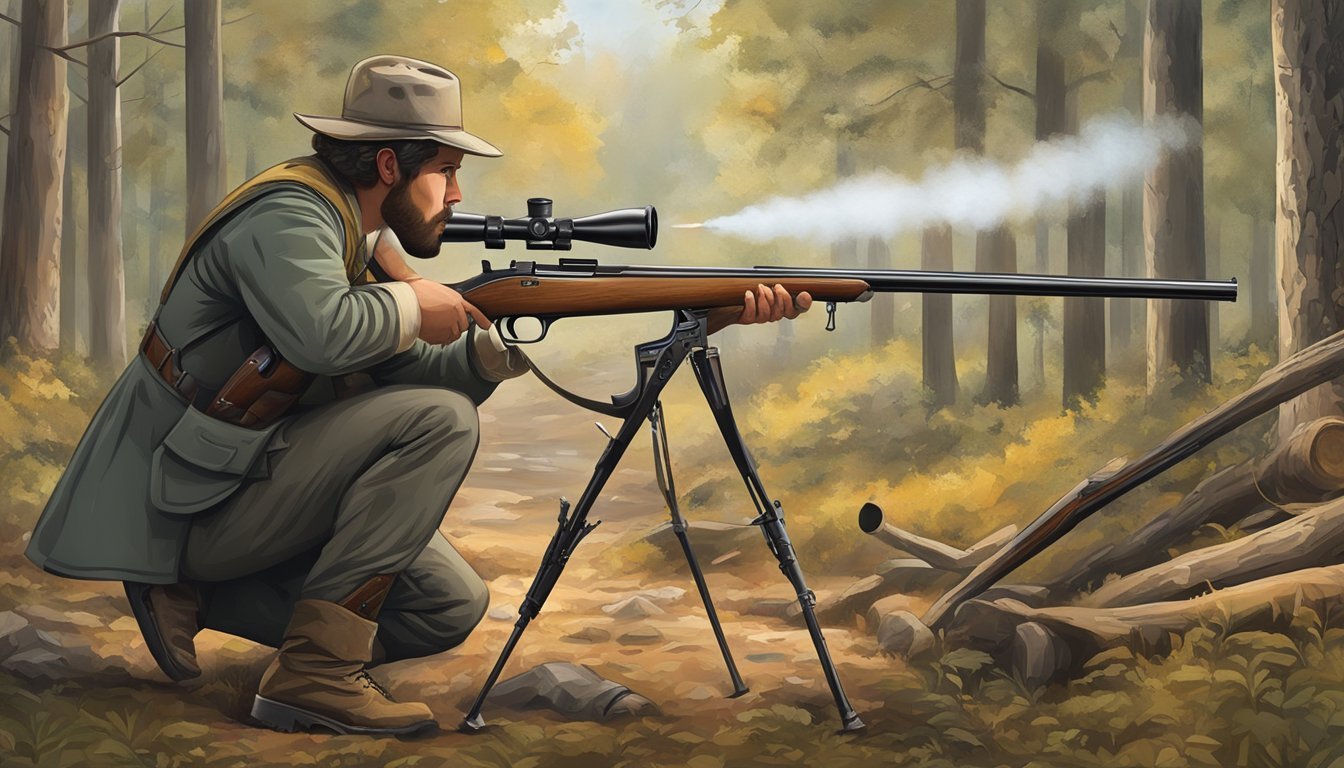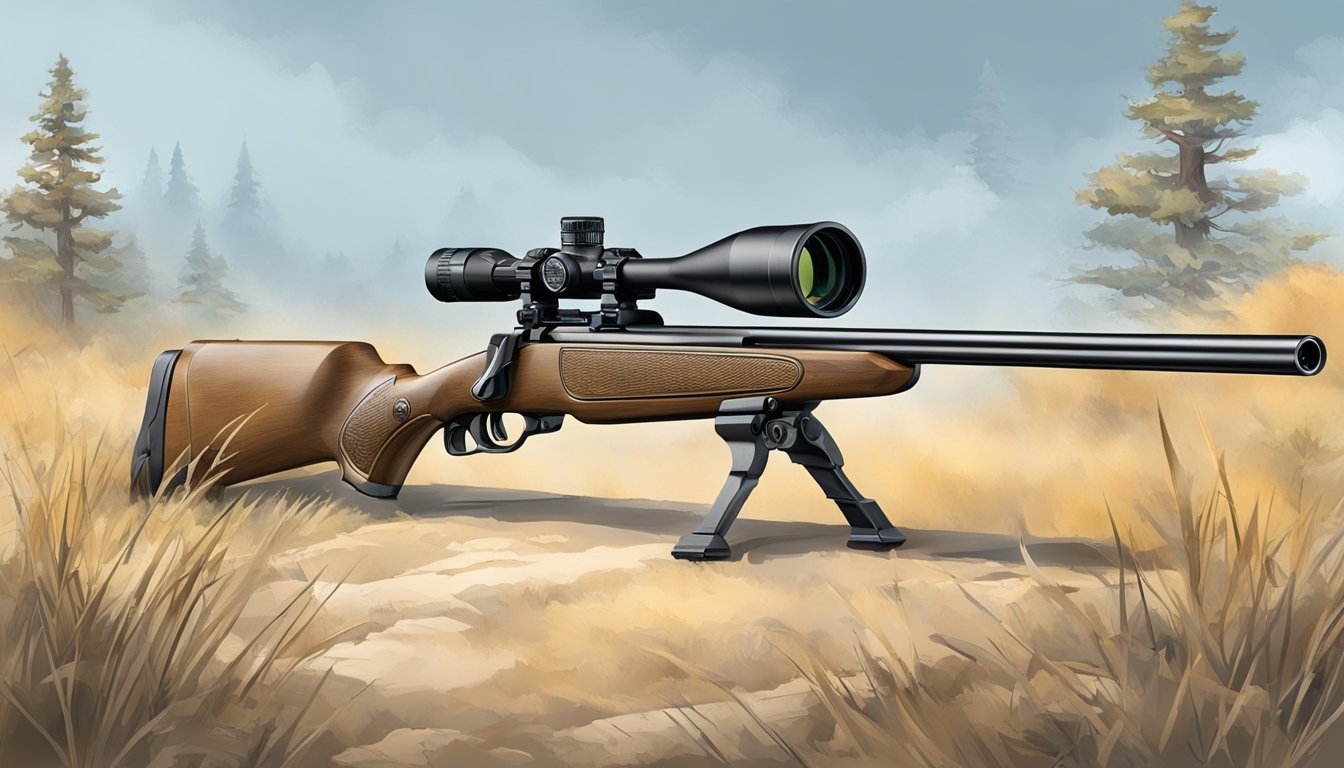Modern Muzzleloaders
Unveiling Advancements in Black Powder Firearms
Modern muzzleloaders bear little resemblance to the black powder firearms of the past. Today's models feature traditional charm and advanced technology, creating historical and innovative firearms. The evolution of these firearms has integrated precision engineering and modern materials, offering a shooting experience that rivals contemporary firearms. These advancements have made muzzleloading a popular choice not just for historical reenactments but also for hunters looking for a challenge and marksmen seeking to hone their skills.
The allure of muzzleloading lies in the hands-on loading process, which involves manually loading the powder, wadding, and projectile. This intimate knowledge of the firearm's operation appeals to those who appreciate the ritualistic aspect of shooting. Modern advancements include developing break-action designs and using synthetic materials to improve durability and performance. Many of today's muzzleloaders come equipped with features for mounting optics, such as scopes, which are conducive to target shooting and hunting.
Muzzleloaders have seen significant changes in recent years. Hunters are now offered rifles effective at greater distances, many capable of achieving sub-MOA accuracy with consistent loading practices and maintenance. Using inline ignition systems, which directly align the cap or primer with the powder charge, has dramatically increased the reliability and efficiency of these muzzleloaders. With these enhancements, muzzleloaders have secured a place in the modern hunter's arsenal, offering a unique season, the satisfaction of traditional shooting methods, and the benefits of contemporary rifle technology.
History of Muzzleloaders
Most muzzleloaders have undergone significant transformation from their origins, embracing technological advancements that have redefined their mechanisms and performance. These rifles have a storied evolution, highlighting a journey from simple flintlock systems to sophisticated in-line ignition mechanisms.
From Flintlock to Percussion Cap
Flintlock rifles dominated the muzzleloading landscape for centuries, representing a leap forward from matchlock weapons. These devices relied on a piece of flint to create sparks that would ignite the black powder charge. By the early 19th century, flintlocks began to be replaced with an innovative system: the percussion cap. Patented in England on July 4, 1807, the percussion cap was a pivotal advancement offering more reliable ignition, particularly in damp conditions. This development made the muzzleloader more dependable and set the stage for further innovations in rifle technology.
Rise of the Modern Muzzleloader
Today's muzzleloader emerged in 1985 with the first mass-produced in-line muzzleloader, marking a significant divergence from traditional models. The critical advancement in such a modern rifle was the alignment of the ignition system directly with the powder charge. This change provided numerous benefits, including:
Consistent ignition: Improvements in reliability and performance were achieved with the new design.
Enhanced safety: The new ignition systems were safer than their predecessors.
Increased accuracy: In-line designs advanced the precision of muzzleloaders, drawing from the principles of modern rifles.
The MK-85 was a landmark model that incorporated these features and ignited a trend.
Modern Muzzleloader Basics
The muzzleloader or black powder rifle is a sophisticated gun that merges traditional black powder shooting mechanics with contemporary technology to offer hunters and shooting enthusiasts a unique experience.
Components of Today's Muzzleloader
A muzzleloader of today can be dissected into several vital components. The primary loading sequence involves the powder, which can be loose black powder or pelletized propellants. Next, a patch may wrap around a ball, or a bullet may be seated directly on the powder. More modern designs utilize a sabot, a plastic sleeve that encases the bullet, enhancing accuracy and velocity. The 209 primer is the ignition source, commonly used with an accelerator breech plug or a quick-release breech plug for improved ignition efficiency. This entire assembly is critical in ensuring the rifle operates as intended, with each component playing a distinct role in the muzzleloading process.
Powder: Black powder or equivalent substitutes.
Projectile: Balls, bullets, or sabots.
Ignition: 209 primer and breech plug systems.
Loading: Manual from the muzzle end.
Types of Modern Muzzleloader
Modern muzzleloaders broadly fall into two categories based on their ignition systems: modern inline muzzleloaders and traditional designs such as the flintlock. A modern inline muzzleloader has a firing mechanism in line with the barrel, resulting in direct ignition. This setup often features a closed breech, a 209 primer ignition, and a breech plug, facilitating ease of use and consistent performance. In contrast, flintlocks and other traditional muzzleloader rifles utilize a percussion ignition system, with the trigger linked to a visible hammer striking flint to ignite the powder.
Inline Muzzleloader: Features a straight line from primer to powder charge.
Traditional Designs: Include flintlock and percussion systems with external hammers—for example, the Hawken Woodsman Flintlock Kit. The Hawken Woodsman maintains the classic styling and handling of the time-honored Hawken while offering outstanding performance and affordability. The Hawken Woodsman features a double-set trigger in an oversized glove-fitting trigger guard with a finger rest.
Muzzleloading Ammunition
Choosing the right ammunition is crucial for effective muzzleloading, with options varying from traditional lead balls to modern saboted projectiles. One must also consider the type of propellant used, whether the traditions of black powder or a modern substitute.
Bullets and Projectiles
Lead Balls: Following traditions the classic round lead ball is the standard choice for black powder rifles. It is inexpensive and easy to manufacture. However, it is less accurate when used at longer ranges than modern designs.
Conical Lead Bullets: These elongated projectiles offer improved accuracy and energy retention over lead balls. They come in two types: swaged, which are formed in a die under pressure, and cast, which are made by pouring molten lead into molds.
Saboted Bullets: A sabot is a plastic sleeve that allows the use of a smaller diameter bullet in the muzzleloader. When the gun is fired, the sabot grips the rifling to impart spin to the bullet, then separates once it exits the barrel. This design allows for higher velocities and greater accuracy.
Power Belt Bullets: These are a specific type of conical bullet with a plastic base attached, designed to fit easily into the rifling of a muzzleloader. They provide ease of loading and are known for consistent performance.
Bullet Type Description Benefits Lead Balls Round, simple design Inexpensive, traditional Conical Lead Elongated, improved accuracy Better range, energy Saboted Bullets Uses plastic sleeve (sabot) Higher velocity, accuracy PowerBelt Bullets Conical with plastic base Ease of loading, performance
Black Powder and Substitutes
Black Powder: The traditional propellant for a black powder rifle is Goex black powder. Its predictable performance has been the standard for centuries. However, it's important to note that it is highly hygroscopic, meaning it absorbs moisture readily, which can affect performance.
Black Powder Substitutes: Modern substitutes like Pyrodex offer several advantages; they are less sensitive to moisture and produce less fouling inside the barrel. Pyrodex is available in different granular sizes to match various shooting needs.
Primers: Primers provide the initial spark that ignites the propellant. Different types of primers are used in modern black powder rifles, and the choice often depends on the type of rifle and the powder used.
Due to their highly explosive nature, one must follow strict safety guidelines when handling black powder and its substitutes. Also, shooters should consistently use the same powder or substitute to achieve reliable accuracy and performance.
Propellant Description Characteristics Black Powder Traditional, hygroscopic Predictable, potent, moisture-sensitive Pyrodex (Substitute) Less moisture-sensitive Less fouling, different granulations available Primers Ignition source for the propellant Type varies with rifle and powder choice
Each ammunition type has its specific use scenarios, and choosing the right combination of projectile and propellant is key to a successful muzzleloading hunt.
Loading and Firing
Modern muzzleloading rifles require specific steps to load and ignite properly, ensuring safety and accuracy. The user must handle the loading process and ignition systems carefully.
The Loading Process
To load modern black powder rifles, one must follow these critical steps:
Ensure the rifle is safe by checking the barrel is free of obstructions and the gun is not already loaded.
Pour the measured black powder or powder substitute down the barrel.
Insert the projectile (often a bullet or ball) over the powder charge.
Firmly seat the projectile on the powder charge using a ramrod to avoid air gaps that could affect performance.
To achieve reliable accuracy, The shooter must maintain consistency in powder charges and seating pressure between shots.
Ignition Systems
Once the black powder rifle is loaded, the type of ignition system determines the following steps:
Flintlock: A piece of flint strikes a steel frizzen, creating sparks that ignite the powder charge.
Percussion Cap: A small cap placed on a nipple creates a spark when struck by the hammer, igniting the charge.
209 Primer: This shotgun primer is today's most reliable ignition source for black powder rifles. It provides a strong and consistent spark that ignites the powder.
The chosen ignition system must be compatible with the specific black powder rifle being used, as the rifle design will dictate whether it can utilize a flint, percussion cap, or a 209 primer.
Performance Enhancements and Accessories
Modern black powder guns have seen significant advancements in their design, primarily aimed at improving precision and sighting. These enhancements and accessories ensure that each component contributes effectively to accuracy and reliability.
Barrels and Accuracy
The barrel is a critical factor in a muzzleloader's accuracy. The integration of Bergara barrels in some modern black powder rifles exemplifies this progression. Known for their high-quality craftsmanship, these barrels provide superior stability and consistency, essential for improved shot accuracy. Users often notice that the tolerances and design of the barrel significantly affect the trajectory and stability of the ball, thereby enhancing accuracy.
Sights and Scopes
When it comes to sighting systems, there have been notable improvements. Iron sights have evolved with advanced materials such as fiber optic sights. These allow for greater visibility and precision, particularly in low-light conditions. For instance, Truglo fiber optic sights are popular for rifles offering bright, high-visibility aiming points.
Moreover, modern black powder rifles now commonly pair with sophisticated scopes, enabling users to achieve pinpoint accuracy in a hunt over longer distances. Scopes add the benefit of magnification and clearer target acquisition, which is a considerable advantage over traditional hunt-sighting systems. With a proper scope, a black powder rifle can be reliably accurate, making it a suitable option even for long-range shooting scenarios.



